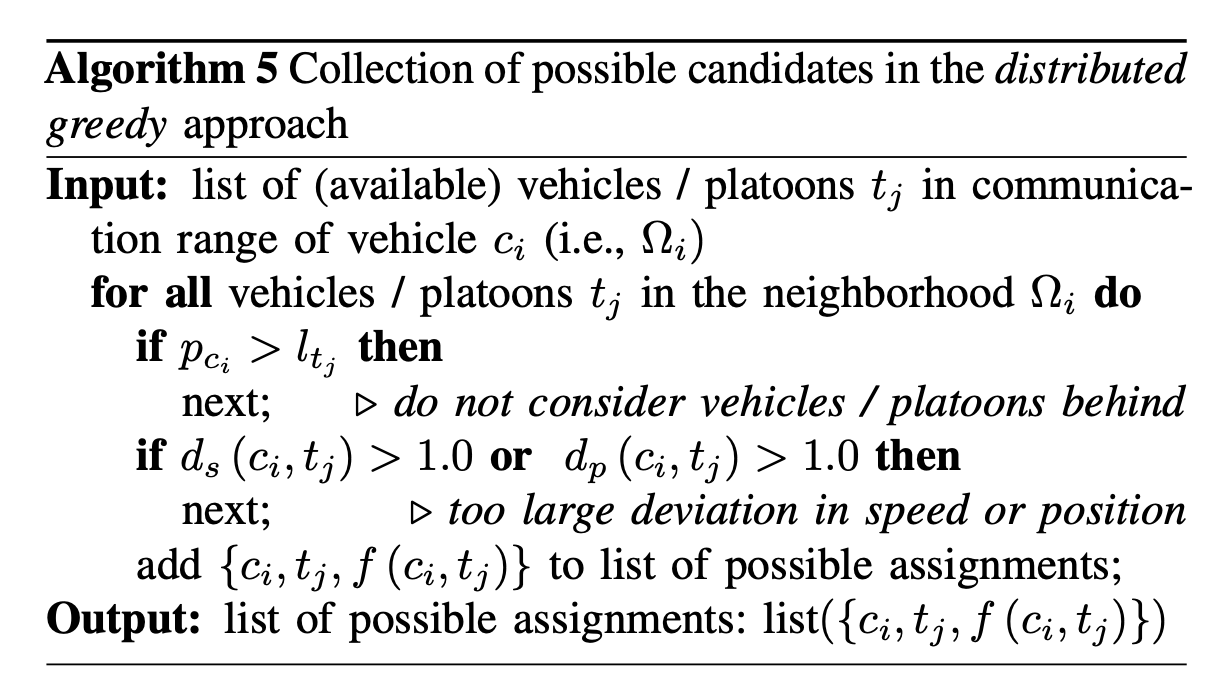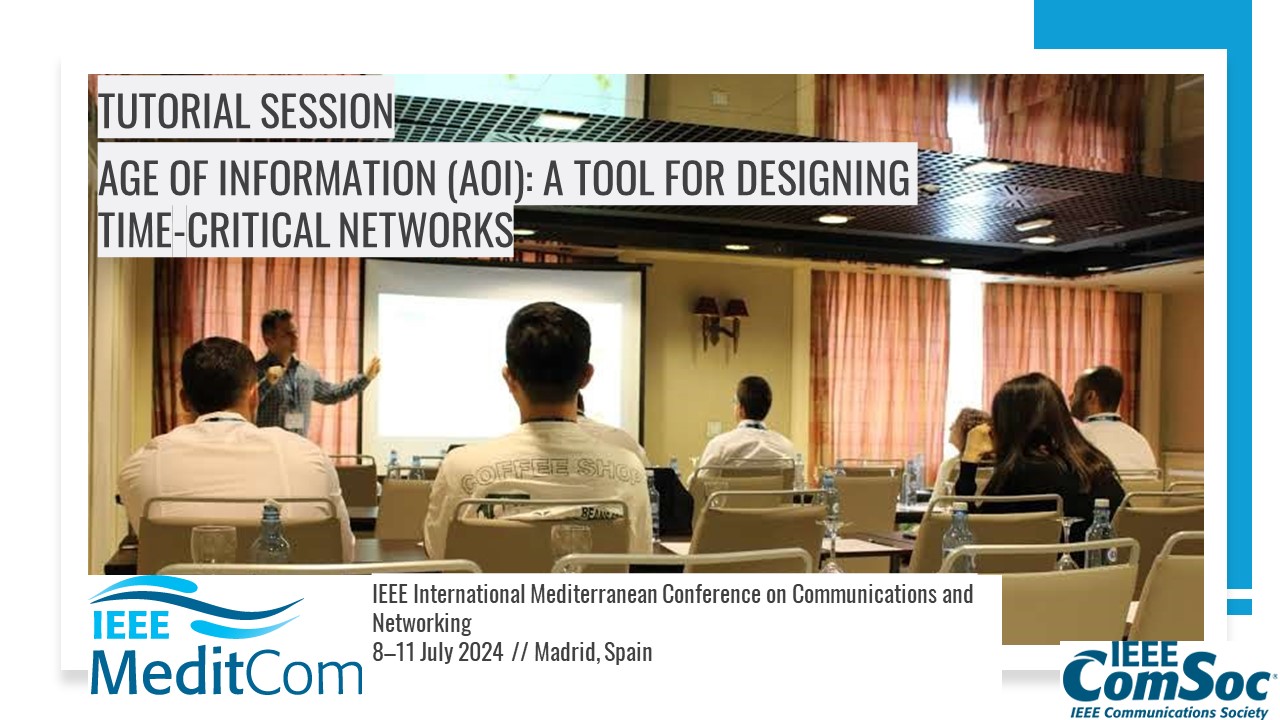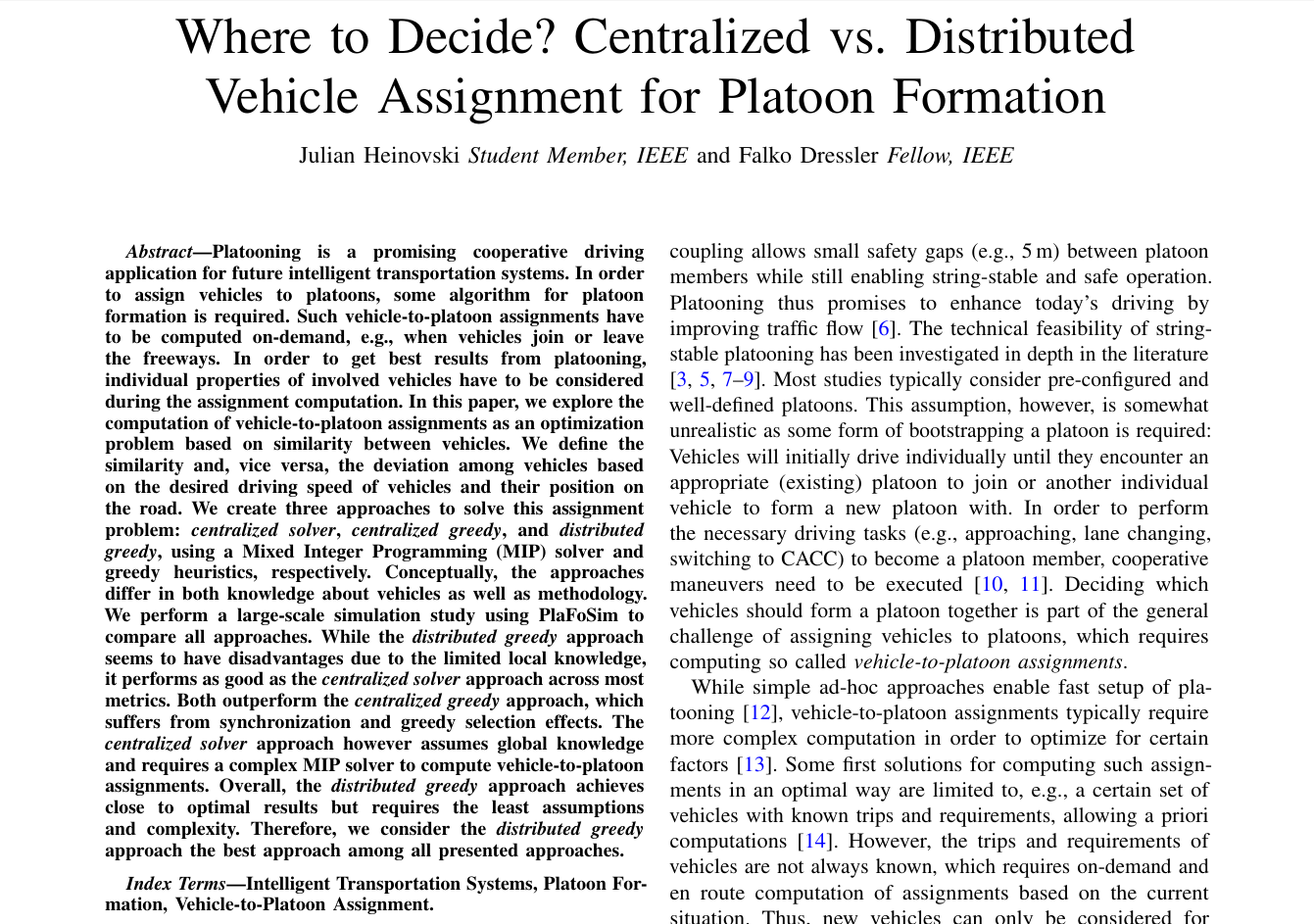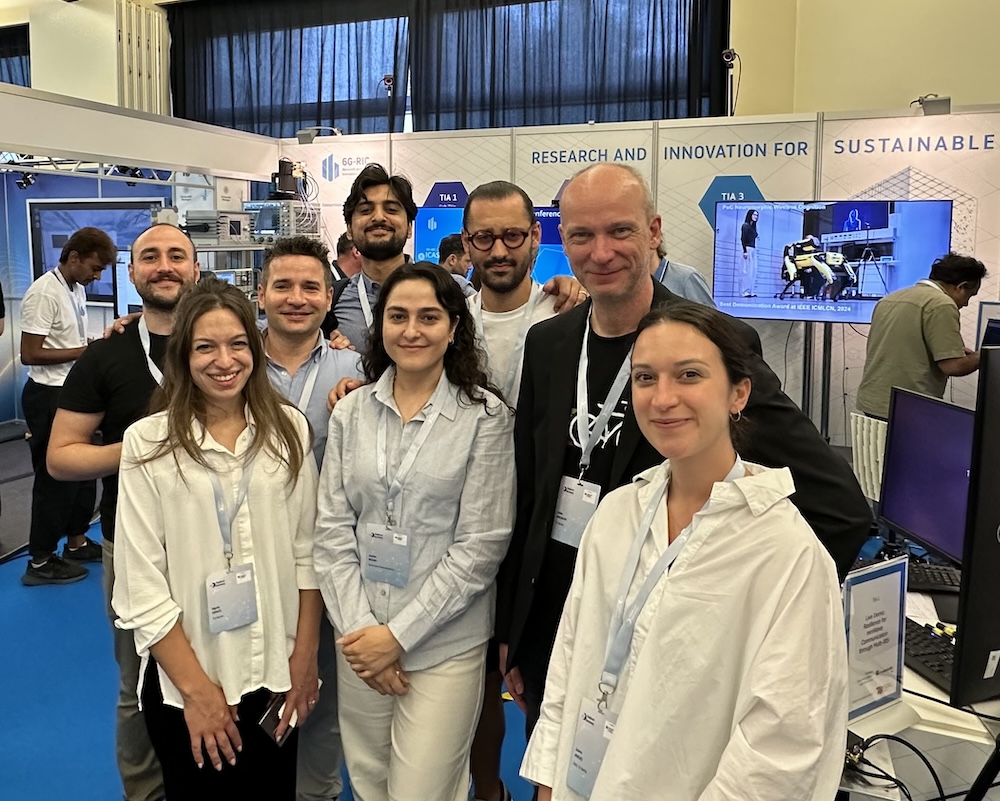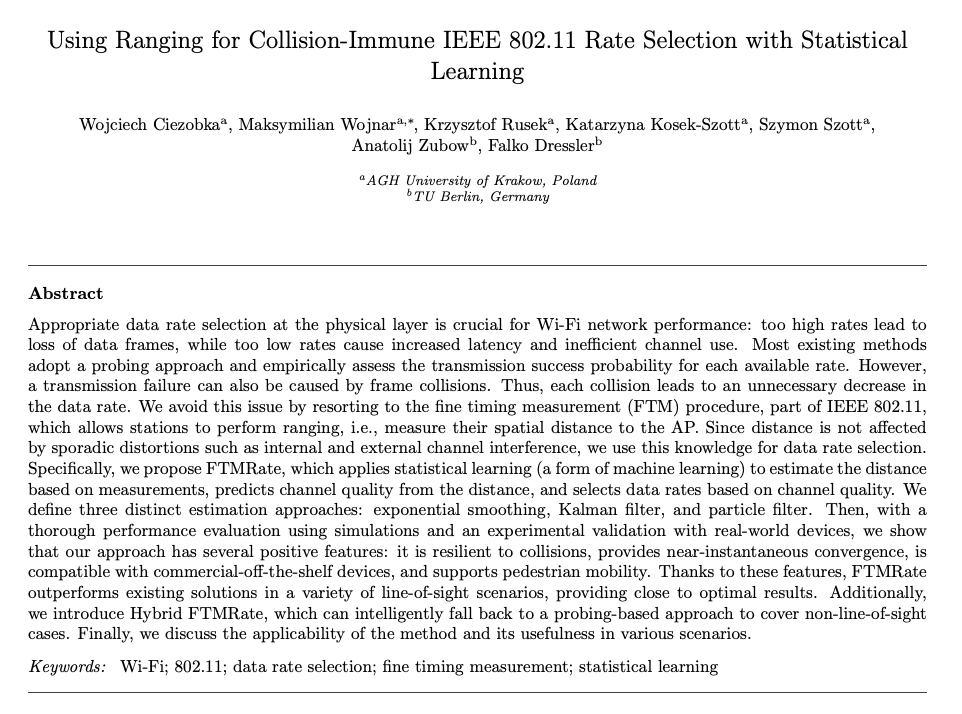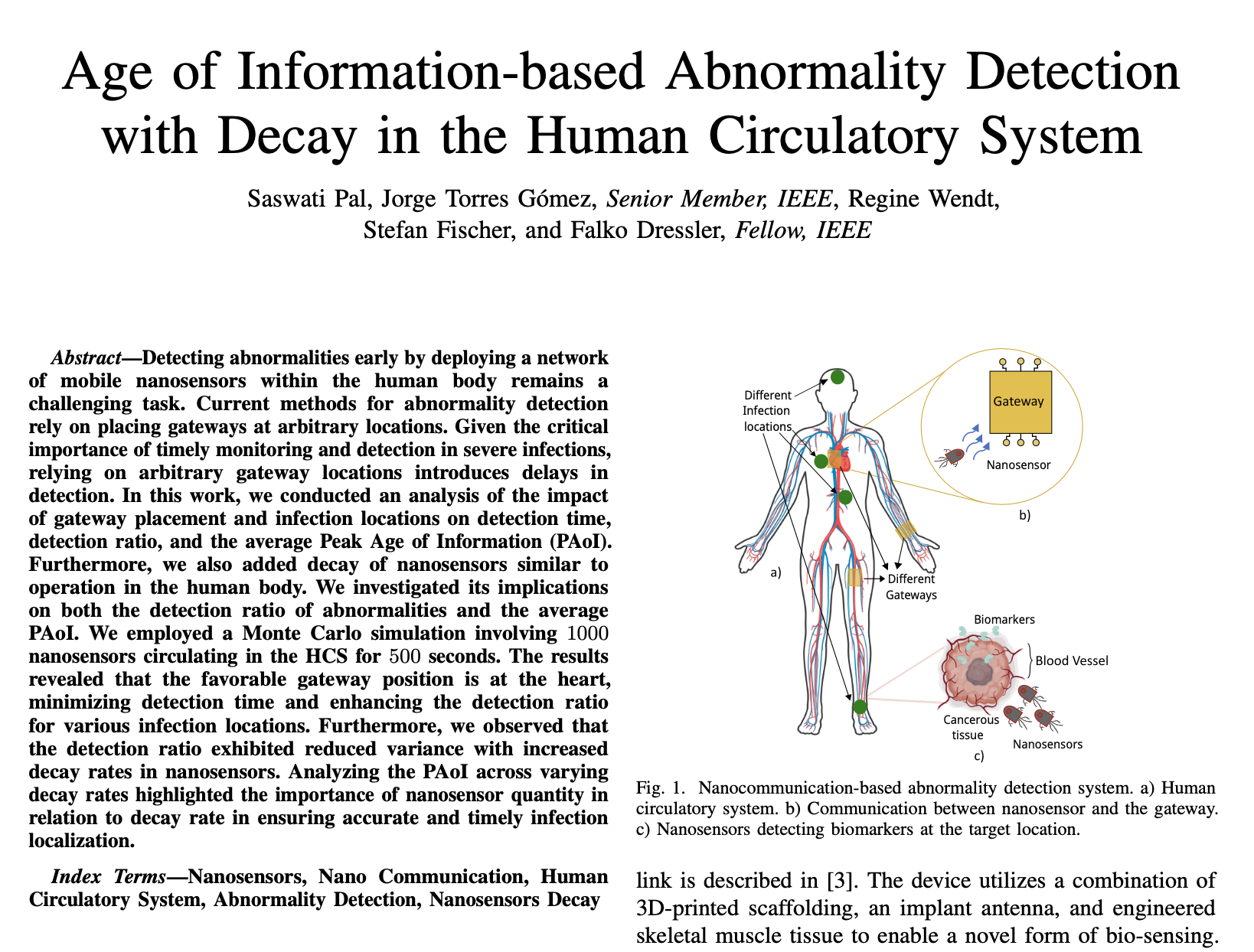Literature Database Entry
blobel2016protocol
Johannes Blobel, Christoph Sommer and Falko Dressler, "Protocol Options for Low Power Sensor Network MAC using Wake-up Receivers with Duty Cycling," Proceedings of IEEE International Conference on Communications (ICC 2016), Kuala Lumpur, Malaysia, May 2016, pp. 3925–3930.
Abstract
Advances in miniaturization of sensor nodes enable a wide range of novel application scenarios. At the same time, however, this miniaturization drastically reduces the energy available for communication. We focus on wildlife monitoring applications for bats, which set a weight limit of 2g for the sensor node including the battery. Here, the protocol design is complicated by the need to recharge a capacitor before each communication attempt. For communications with ground stations, wake-up receivers are used that inherently help mitigate synchronization demands and to provide a superframe structure. We study the not obvious choice of transmission slots within these synchronized superframes. Our findings clearly indicate that slotted access outperforms simple random channel access. Well-planned TDMA schedules only bring little gain compared to random slot selection.
Quick access
Original Version ![]() (at publishers web site)
(at publishers web site)
Authors' Version ![]() (PDF on this web site)
(PDF on this web site)
BibTeX ![]()
Contact
Johannes Blobel
Christoph Sommer
Falko Dressler
BibTeX reference
@inproceedings{blobel2016protocol,
author = {Blobel, Johannes and Sommer, Christoph and Dressler, Falko},
doi = {10.1109/ICC.2016.7511318},
title = {{Protocol Options for Low Power Sensor Network MAC using Wake-up Receivers with Duty Cycling}},
pages = {3925--3930},
publisher = {IEEE},
address = {Kuala Lumpur, Malaysia},
booktitle = {IEEE International Conference on Communications (ICC 2016)},
month = {5},
year = {2016},
}
Copyright notice
Links to final or draft versions of papers are presented here to ensure timely dissemination of scholarly and technical work. Copyright and all rights therein are retained by authors or by other copyright holders. All persons copying this information are expected to adhere to the terms and constraints invoked by each author's copyright. In most cases, these works may not be reposted or distributed for commercial purposes without the explicit permission of the copyright holder.
The following applies to all papers listed above that have IEEE copyrights: Personal use of this material is permitted. However, permission to reprint/republish this material for advertising or promotional purposes or for creating new collective works for resale or redistribution to servers or lists, or to reuse any copyrighted component of this work in other works must be obtained from the IEEE.
The following applies to all papers listed above that are in submission to IEEE conference/workshop proceedings or journals: This work has been submitted to the IEEE for possible publication. Copyright may be transferred without notice, after which this version may no longer be accessible.
The following applies to all papers listed above that have ACM copyrights: ACM COPYRIGHT NOTICE. Permission to make digital or hard copies of part or all of this work for personal or classroom use is granted without fee provided that copies are not made or distributed for profit or commercial advantage and that copies bear this notice and the full citation on the first page. Copyrights for components of this work owned by others than ACM must be honored. Abstracting with credit is permitted. To copy otherwise, to republish, to post on servers, or to redistribute to lists, requires prior specific permission and/or a fee. Request permissions from Publications Dept., ACM, Inc., fax +1 (212) 869-0481, or permissions@acm.org.
The following applies to all SpringerLink papers listed above that have Springer Science+Business Media copyrights: The original publication is available at www.springerlink.com.
This page was automatically generated using BibDB and bib2web.

